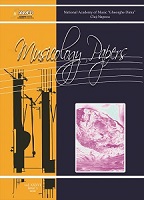Heterophony. Theoretical and Analytical Considerations
Heterophony. Theoretical and Analytical Considerations
Author(s): Peter KoterContributor(s): Marcella Magda (Translator)
Subject(s): Music, Phenomenology
Published by: MediaMusica
Keywords: heterophony; syntactic categories; synchrony; texture; one-multiple; Ștefan Niculescu;
Summary/Abstract: The high and relatively recent interest in the phenomenon of heterophony has generated a variety of new compositions and theories among twentieth-century composers and theorists. Paradoxically, the first proper theories date back to the late 19th and early 20th centuries (C. Stumpf – 1897, G. Adler – 1908, etc.), but the first description of the phenomenon dates back to Antiquity (Plato, The Laws 812D). As a compositional technique, it became frequently used in the 20th century, but originally it was an ancient phenomenon, traced back to Antiquity. We are undoubtedly facing an ancient musical phenomenon, taken from primitive and traditional music, frequently used by the composers of the last century. Most Romanian composers turned their attention to the phenomenon; among them, we mention George Enescu, Sigismund Toduță, Vasile Herman, Anatol Vieru, or Cornel Țăranu, but the most important compositional and musicological contributions belong to Ștefan Niculescu. This succinct and problem-oriented article provides an overview of Niculescu's theory on the phenomenon and the related theories. We will inevitably touch on issues such as basic syntactic categories, synchrony, texture and the one-multiple binomial, the last one being illustrated through a brief analysis of some of the composer's works.
Journal: Lucrări de Muzicologie
- Issue Year: 36/2021
- Issue No: 2
- Page Range: 111-128
- Page Count: 18
- Language: English
- Content File-PDF

